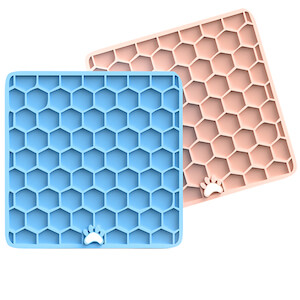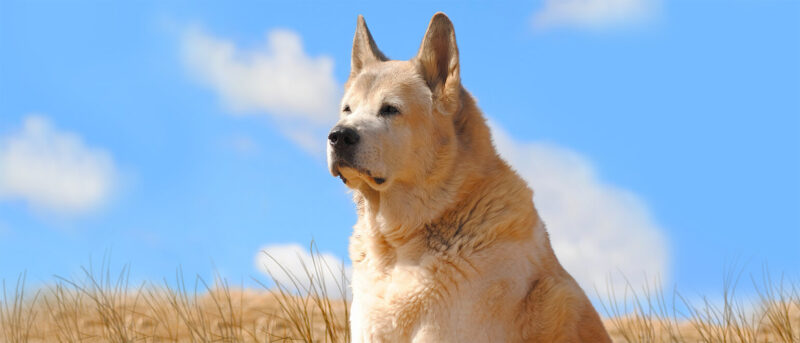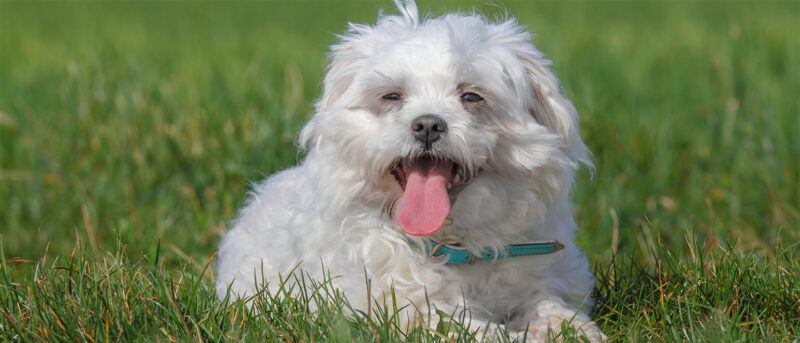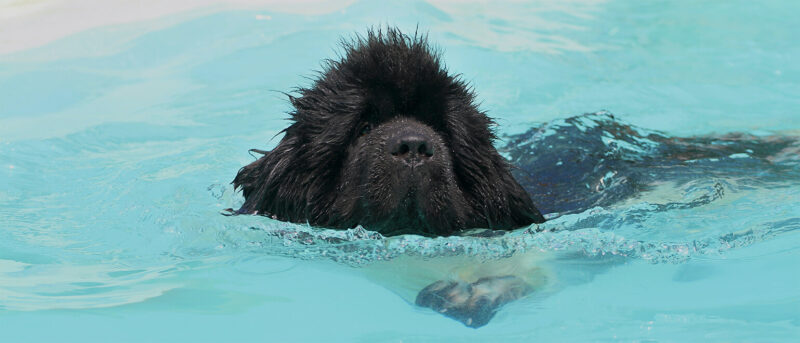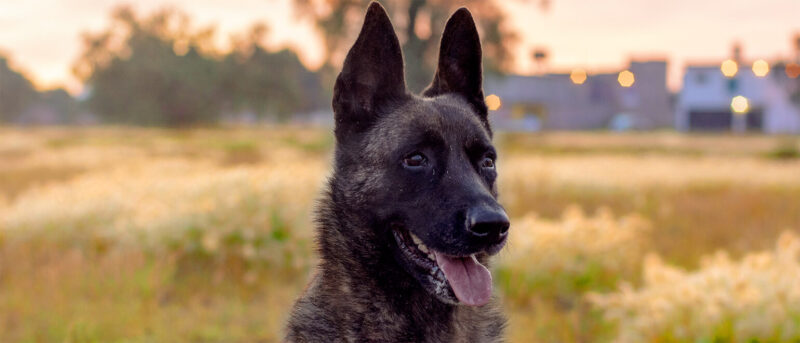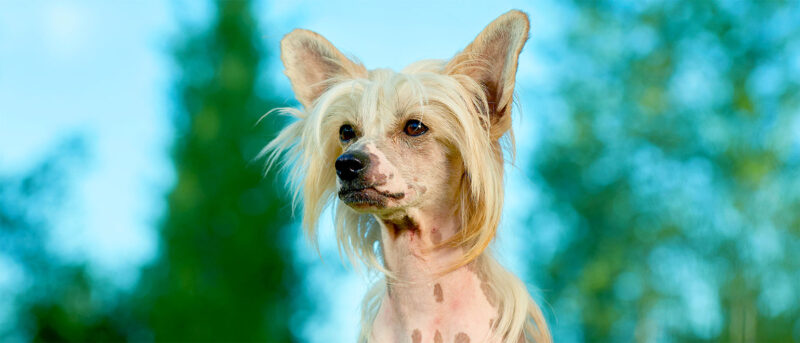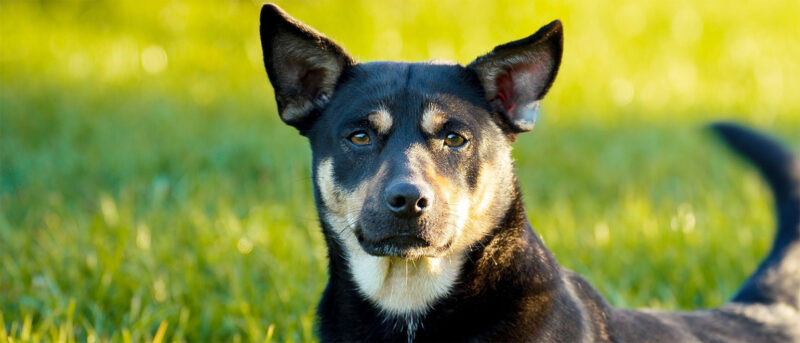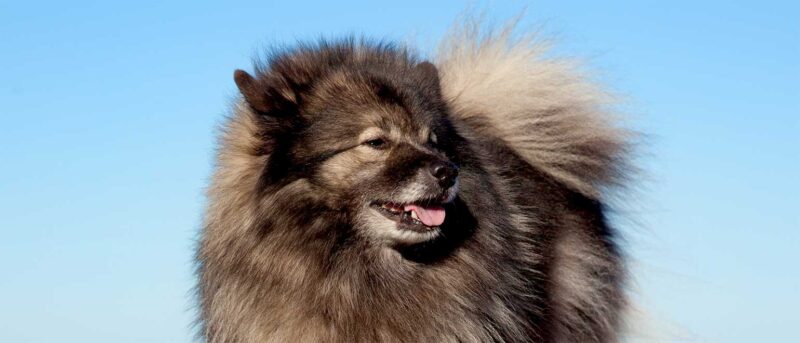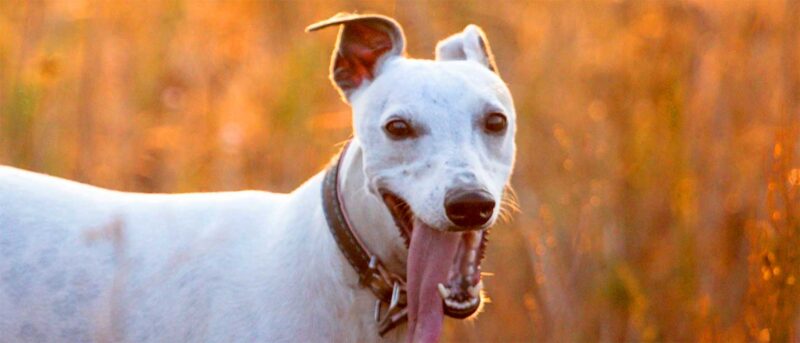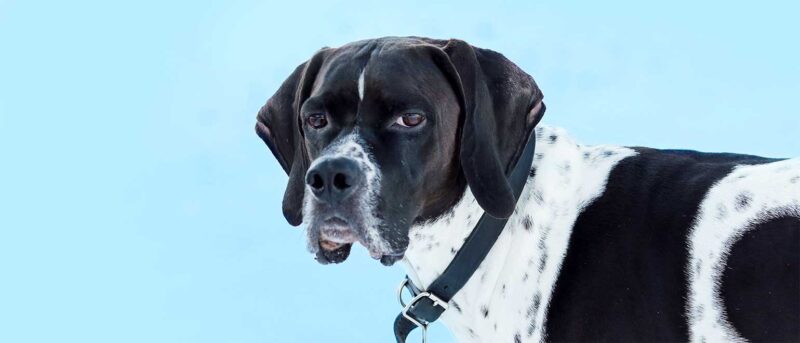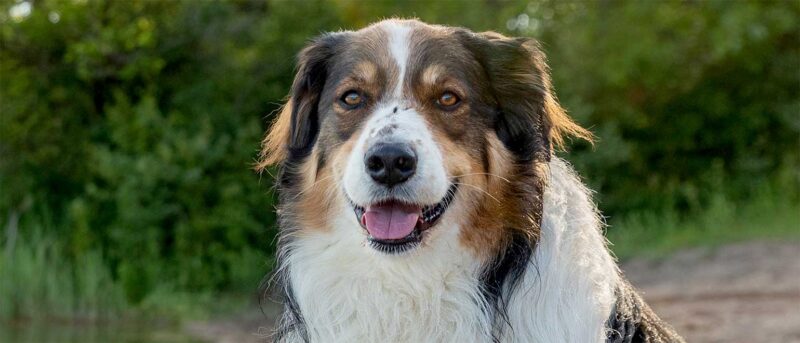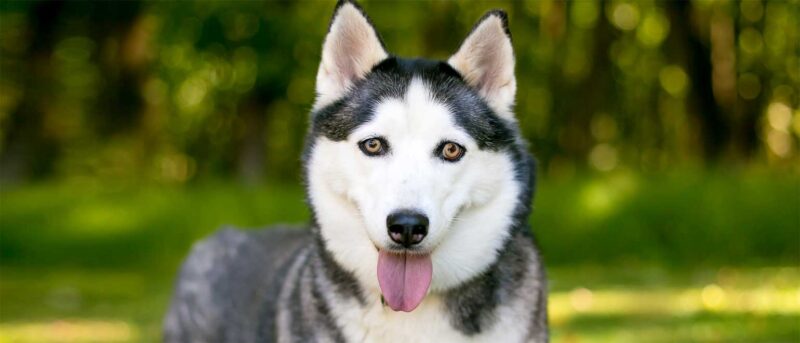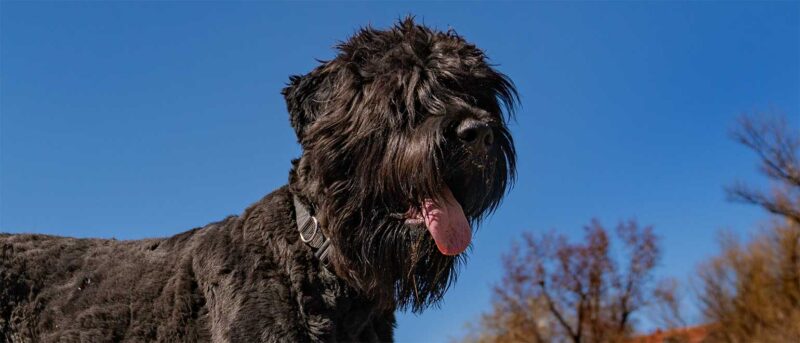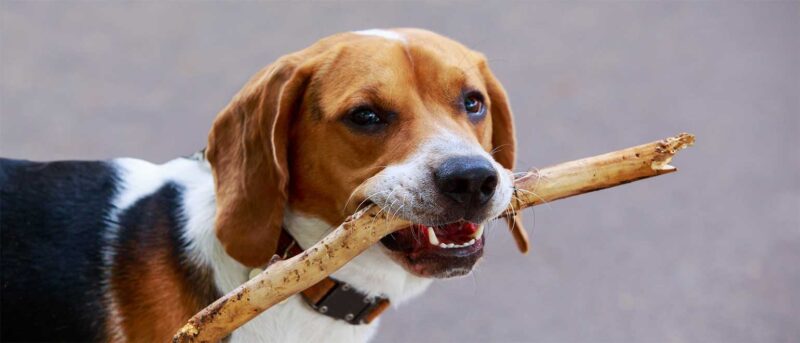The Complete Guide For The West Highland White Terrier. Learn Everything You Need To Know About This Spunky Breed!
The West Highland White Terrier may be small, but it packs plenty of personality in a tiny package! Originally from Scotland, West Highland White Terriers are known for their elegant white coat, playful personality, and friendliness. Westies are extremely smart and always willing to please, which makes them great family pets! Affectionately known as Westies, […]
The West Highland White Terrier may be small, but it packs plenty of personality in a tiny package! Originally from Scotland, West Highland White Terriers are known for their elegant white coat, playful personality, and friendliness. Westies are extremely smart and always willing to please, which makes them great family pets!
Affectionately known as Westies, this dog breed is full of energy, enjoy spending time with people, and sometimes chase after small rodents. Let’s take a closer look at the West Highland White Terrier and find out what makes this breed so special!
West Highland White Terrier Characteristics
The West Highland White Terrier is a small, well-balanced dog breed that has all the physical characteristics of the Terrier dog category. West Highland White Terriers are strongly built with a deep-in chest and back ribs. They also have powerful hindquarters, which provide a full range of motion and surprising strength for such a small frame.
The Westie is a compact dog but maintains a balanced body that is excellent for hunting small rodents and other physical activities. Its forequarters are well built and well-knit to the backbone.
White Terriers should have a proportionate head to the body. A Westie’s expression is inquisitive and piercing, with medium-sized eyes set widely apart from each other. The ears are small and usually stand erect. Their muzzles are blunt and slightly shorter than the skull, capped off with a large and powerful black nose. The lifespan of a West Highland White Terrier is between 12 and 16 years.
West Highland White Terrier Dog Breed Size
The West Highland White Terrier is a compact yet sturdy dog with a deep chest and slightly rectangular shape. Male Westies can grow up to about 11 inches tall, and female Westies can grow up to 10 inches tall. Male Westies typically weigh 15-22 lbs, and females usually weigh somewhere between 13-16 lbs.
West Highland White Terrier Personality
The West Highland White Terrier, or “Westie,” is a lively, bold dog with a charming personality and a contagious smile that’s sure to win over everyone in the family! They love spending time with their owners, playing with squeaky toys, and spreading positive energy around the household. Though these little guys can be a bit mischievous, their playful pranks are always lighthearted and meant to bring joy.
Westies are known for being friendly and get along well with everyone in the family. While they love being around people, they aren’t typically lapdogs. Instead, they’ll show their affection by sitting near you, often on the other side of the couch, content just to hang out while you relax and watch some TV.
Naturally intelligent and curious, Westies are always on the lookout for small critters and may even enjoy digging in the yard. Their Terrier instincts make them keen hunters and explorers, always eager to investigate their surroundings.
Though they have a spunky attitude and aren’t afraid to stand up for themselves, Westies are typically not aggressive. They thrive on new challenges, whether it’s an exciting adventure, a car ride, or discovering new places by your side.
West Highland White Terrier Dog Breed Exercise
Don’t let their small size fool you. West Highland White Terriers are packed with energy! Westies love to play, run around, and enjoy going for walks. While they may not seem intimidating, their natural hunting instincts kick in when they see something move, so it’s important to keep them on a leash or in a secure, fenced area to prevent them from running off.
Their lively and energetic nature makes Westies excellent participants in various canine sports, including obedience, rally, and agility. They also have a natural talent for Earthdog and hunting events, where their instincts really shine.
West Highland White Terrier Training
West Highland White Terriers are smart and confident, which makes them enjoyable to train. While they tend to be independent, Westies are generally responsive to training. At times, they may display a bit of stubbornness, but with patience and consistency, they usually come around.
Westies are quick learners and can be trained to do anything from fun tricks to controlling their barking. The key to successful training is while they’re still puppies. Early training helps them develop good habits that last into adulthood.
Like any breed, socialization is crucial for Westies. Exposing them to new experiences, sights, sounds, and people helps build their confidence. A well-socialized Westie is more comfortable in unfamiliar situations and gets along better with other dogs and new people!
West Highland White Terrier Dog Breed History
The West Highland White Terrier has a rich history that traces back to the early 1600s during the reign of King James I, when they were known as the dogs of Argyleshire. In the 1800s, Colonel Malcolm of Poltalloch played a key role in developing the breed, which was then called the Poltalloch Terrier.
A well-known story behind the Westie’s distinctive white coat involves a hunting accident. According to legend, Colonel Malcolm accidentally shot one of his wheaten-colored Cairn Terriers, mistaking it for a fox. After this tragic event, he decided to breed only white-coated dogs to avoid such accidents in the future.
The Westie’s history closely parallels other Scottish terrier breeds like the Dandie Dinmont, Skye, Scottish, and Cairn Terriers. Bred primarily for hunting foxes, badgers, and other small vermin, Westies have retained their instinct to chase anything that moves.
Over the years, the West Highland White Terrier has gone by several names, including Poltalloch Terrier and Roseneath Terrier. In 1906, the breed was officially recognized by the Kennel Club of England as the West Highland White Terrier.
Common Health Problems in the West Highland White Terrier
Like all dog breeds, West Highland White Terriers can be prone to certain health issues. Some minor health concerns can be managed with simple home remedies, but others may be more serious and require professional veterinary care. It’s important to stay alert and seek medical attention when needed to keep your Westie in the best possible health.
Craniomandibular Osteopathy
Craniomandibular osteopathy is a rare condition that affects the growth of the skull bones in puppies. It typically begins between 4 and 8 months of age and causes the skull to grow irregularly large. The exact cause is unknown, but the condition is mostly hereditary.
Currently, there is no cure for craniomandibular osteopathy. However, medication can help manage pain and relieve jaw muscle discomfort. Ensuring your dog receives proper nutrition is crucial, and you might need to use a feeding tube if necessary.
The best approach is to consult your vet for advice on managing the condition and to get recommendations for appropriate medication.
Legg-Calve-Perthes Disease
Legg-Calve-Perthes Disease is a condition in which the blood supply to your dog’s head of the femur is decreased. When this occurs, the part of the femur that connects to the pelvis begins to disintegrate and can lead to significant pain. Some of the first signs of LCPD are limping and weak leg muscles. This condition usually occurs when your Westie is still a puppy (about 4-6 months old).
In milder cases, pain medication may be enough to manage the condition. However, if the condition worsens, you may have to take your dog to the vet for hip replacement surgery. After surgery, your dog will need plenty of physical therapy and medication to fully recover.
If your pup has any discomfort from this disease, CDB oil may be a useful tool in helping manage that pain.
Cataracts
Cataracts are an eye condition that can make it difficult for your dog to see clearly. When a dog has cataracts, their eyes may appear cloudy or hazy, which can eventually lead to complete blindness. While cataracts commonly develop in older dogs, West Highland White Terriers are prone to getting them earlier than some other breeds.
Fortunately, cataracts can often be treated with surgery, which can significantly improve your dog’s vision. Regular eye check-ups are important, especially for Westies, to catch any issues early and ensure their eyes stay as healthy as possible.
Pulmonary Fibrosis
Pulmonary fibrosis is a lung disease that affects the supportive tissue in the lungs’ air sacs and connective tissue. This condition is notably more common in West Highland White Terriers. Pulmonary fibrosis impairs the normal transfer of oxygen into the blood.
Dogs with pulmonary fibrosis may exhibit symptoms such as reduced stamina, rapid breathing, a dry cough, and difficulty breathing. This serious condition can lead to heart failure and other severe health issues.
Currently, there is no cure for pulmonary fibrosis, and the prognosis is often poor. To help manage the condition and prevent respiratory infections, it’s important to limit your dog’s exercise and maintain a consistent, healthy diet. Early detection is crucial and can be life-saving, so regular veterinary check-ups are essential to monitor your dog’s lung health.
Patellar Luxation
Patellar luxation is a common issue in small dog breeds where the patella, or kneecap, becomes dislocated. This condition is particularly prevalent in smaller dogs.
Symptoms of patellar luxation can include pain, difficulty walking, or lameness in one or both hind legs. In many cases, joint supplements or medications can help manage the condition and alleviate discomfort. CDB oil may be useful for any dogs affected by this condition.
For more severe instances, surgery may be necessary to reposition and secure the kneecap. Following surgery, your dog might need physical therapy and a specific diet plan to ensure a full recovery.
How to Care for a West Highland White Terrier
West Highland White Terriers are incredibly adaptable and can thrive in a variety of living environments. Their small size makes them well-suited for apartment living. Just make sure they get plenty of walks. They also enjoy the space of large farms where they can chase after rodents. As long as they have enough playtime and access to outdoor areas, they will be content and happy!
When your Westie is outside, it’s important to keep a close watch on them, as they might dart off at the sight of a squirrel or another small creature. Ensure they are either in a securely fenced yard or on a leash to prevent them from running off.
Westies can experience separation anxiety when left alone, but they usually manage well if there is background noise, such as a TV or radio, to fill the silence. Providing them with a variety of toys can help keep them engaged and active while you’re away.
These dogs are social and love spending time with their family, often bringing joy with their playful antics. While they might not be the best lapdogs, they enjoy their owner’s company and value any quality time you spend together.
Nutrition and Feeding for a West Highland White Terrier
Proper nutrition is crucial for any dog breed, including the West Highland White Terrier, to help prevent health issues and ensure overall well-being. Westies typically thrive on high-quality commercial dog food or well-balanced home-prepared meals. The recommended daily amount is around 0.5 to 1.5 cups of dry food, divided into two meals.
To keep your Westie at a healthy weight, avoid overfeeding and limit the number of treats given. Although Westies are active and often burn off treats quickly, it’s best to minimize treat intake, especially during training or as a reward. This helps ensure they maintain a balanced diet and a healthy weight.
Coat Color And Grooming
The West Highland White Terrier has a double coat, consisting of a soft, shorter undercoat and a longer, rougher topcoat that’s about two inches in length. This double layer not only protects your Westie from harsh weather but also shields them from the claws and teeth of animals they might hunt.
As the name suggests, a Westie’s coat should always be pure white. Any other color is considered a fault in dog shows.
Westies are easy to groom, requiring regular brushing and occasional trimming. The hair around their feet and face often grows shaggy, so keeping those areas neatly trimmed is essential. Although Westies don’t typically shed, brushing helps remove any loose hair. Despite their white coat, Westies only need to be bathed every few months. Their coat’s natural oils keep their skin healthy and the coat looking fresh.
Make sure to keep your Westie’s nails trimmed to avoid the telltale tapping on hard floors. If regular walks and exercise don’t naturally wear down the nails, trim them every few weeks.
Because Westies love chasing small creatures, they can be prone to infections or parasites. It’s important to regularly check their ears for dirt, redness, or other signs of infection. To clean their ears, use a cotton ball with a small amount of vet-approved, pH-balanced ear cleaner. Regular ear care will help prevent problems and keep your Westie healthy and comfortable.
Children And Other Pets
The West Highland White Terrier has a great personality for families with young children. Their small size makes them easy to play with, and they’re smart enough to interact gently with little kids. However, it’s still important to supervise playtime between children and pets to ensure safety for both.
Teaching your children how to properly interact with a dog is essential. Make sure they understand how to be gentle with your Westie, avoiding rough play like pulling tails or bumping into them—activities your dog might not appreciate.
When it comes to other dogs, Westies are generally good companions, especially with other small breeds. They aren’t typically territorial and usually coexist well with other dogs in the home. Early socialization is key to helping your Westie develop good habits around other animals, reducing the chance of any unwanted behaviors later in life.
And for all you cat lovers out there, we have good news! Westies can also live with cats, as long as the cat is a well-established member of the family. However, due to their natural hunting instincts, they may not be the best fit with smaller pets like hamsters or guinea pigs. For the safety of these smaller animals, it’s best to keep them in their cages and out of reach of your Westie.
West Highland White Terrier Dog Rescue Groups
If you’re looking to bring home your very own West Highland White Terrier, there are several excellent rescue organizations ready to help you find the perfect match.
Westie Rescue USA is a highly reputable organization dedicated to matching Westies with loving adopters nationwide. In over 27 years, they have successfully rescued and rehomed more than 1,200 Westies across the United States.
Another fantastic option is Westie Rescue of California. This group focuses on educating potential owners and providing top-notch rescue services for those interested in the West Highland White Terrier. With over 75 years of combined experience from their founders, they ensure you get the best care and guidance when adopting. In addition to California, they serve nearby states including Arizona, Oregon, Nevada, Utah, Idaho, New Mexico, and Washington.
West Highland White Terrier Dog Breed Organizations
The primary organization for West Highland White Terriers is the West Highland White Terrier Club of America (WHWTCA). As an affiliate of the American Kennel Club (AKC), the WHWTCA is a group of dedicated breeders who are responsible for maintaining the breed’s standards. The club hosts various events, including tracking tests, specialty shows, and obedience trials.
The WHWTCA website offers a wealth of resources for Westie owners, covering topics such as health, behavior training, and fun activities like flyball and barn hunting to keep your Westie active and entertained.
If you’re interested in becoming a member, there are a few qualifications you’ll need to meet. Applicants must be in good standing with the WHWTCA, and you’ll need two sponsors from different households who have been club members for at least a year. The membership fee is $45 annually, but the application process can take up to 10 months to complete.
More About the West Highland White Terrier
The West Highland White Terrier is a popular breed you’ve likely seen without even realizing it. You’ve seen them on the cover of Cesar dog food, as well as movies like Lethal Weapon 3 (1992), Game Night (2018), and Widows (2018).
If you’re looking to buy a Westie from a breeder, expect to pay around $1,000. However, adopting can be a more affordable option. Whether you choose to buy or adopt, always check your dog’s health history to ensure they’ll grow up healthy and happy!







